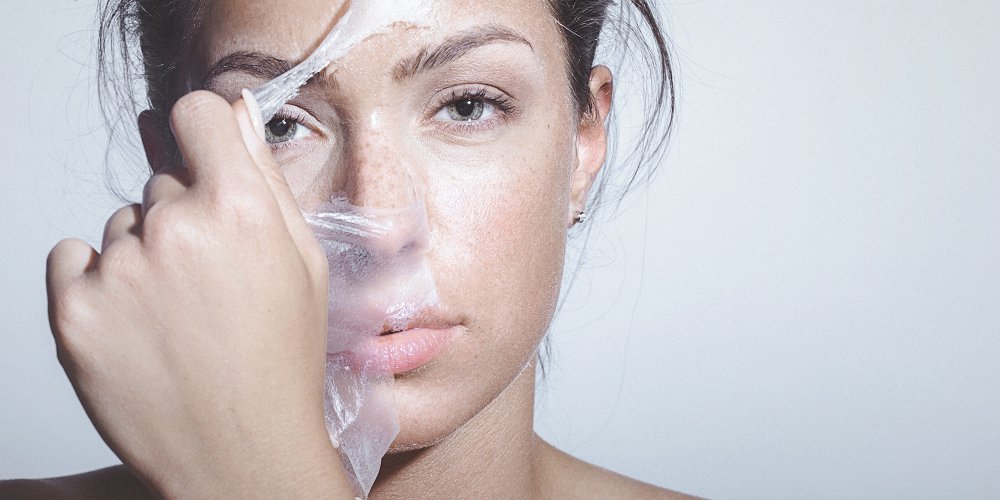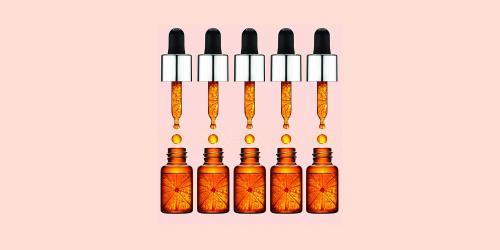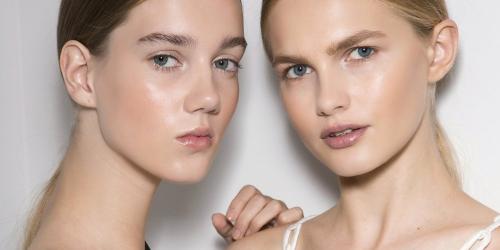Our skin is rarely radiant when the tan has disappeared: the sun has left spots, a thickened skin, a rough horny layer. The new peels are perfect to find radiance and luminosity without irritating or weakening our face.
Why make a peeling?
To find a beautiful skin, simply. It is to help him to squint harmoniously. Ideally, when the new cells of our skin reach the stratum corneocytes, the corneocytes that compose it naturally detach to leave room for new cells. But sometimes this beautiful system stops.
With age, the sun the tobacco the process of desquamation slowed down, resulting in an accumulation of surface cells and rough skin. On the mixed and fatty skins the dead cells which detach themselves anarchically lodge in the pores and clog them. Hello the buttons. On dry skin which desquamates, the dead cells cause a lack of softness and light.
After a well-adapted peeling my skin will regain softness and suppleness, brightness and light. Skin imperfections, fine lines will be erased, smoothed. The new cells will rise faster, without being suffocated, on the surface of the skin. Cell renewal will be stimulated, for a babyskin effect.
Peelings or scrubs, what differences?
They have the same goal, (to cut the bridges that hold the dead cells between them) but different modes of action.
The scrub exerts a mechanical action: under the action of my massage, the very soft little grains hidden in the texture dissociate the dead cells that will fall naturally. During peeling, it is chemical assets that cut the bonds at the level of the intercellular cement.
New house peels that can adapt to all skin types
The majority of the formulas proposed today are based on fruit acids. They do not all have the same "aggressiveness" and brands often associate them to optimize the results or add emollients to neutralize any irritation. We have to choose according to our skin type.
Lactic acid acts gently and is the friend of sensitive skin that do not especially want reactions of tingling or redness type. Combined with jojoba oil (Novexpert) or rice bran extract (Darphin) it smooths the surface of my face without irritating it.
Salicylic acid is made for me if I have acne or small inflammations: it has at the same time an antibacterial action. Lactic acid (Galenic) has been added for good tolerance, or citric acid reducing pores (Filorga).
Glycolic acid exfoliates more deeply because its molecules are small and sneak better between our epidermal cells. To reserve if my skin is greasy, thick and unlikely. But it is a star and biologists, aware of its effectiveness, have formulated mixtures that soften the irritating effects by playing on concentration and especially on the molecules that accompany it. aloe vera softening (Réxaline), Extracts of fermented black tea and polyphenols to adapt to the most sensitive skins (Vichy), Aminofil® to redensify, (NeoStrata).
Other alternatives: urea. At low concentration it is humectant, more concentrated it is an excellent peeling. Keratolitic, it is softer than AHA and perfect for our dehydrated skin (SkinCeuticals).
Retinol or vitamin A: it is a peeling anti aging extraordinary, but attention to its irritating and photo-sensitizing side effects. I use it at home always at night (SkinCeuticals, Esthederm).
How do I do it in my bathroom?
It all depends on the sensitivity of my skin and my schedule.
For the fearful: I exfoliate every day but gently with AHA lotions, on clean skin, (Garancia, Clarins, Filorga) and I do not forget to put a day cream on top.
For the assidues: every evening I carry out a soft peeling after my make-up, passing the product with a cotton (Vichy). If, exceptionally, my skin reacts badly I only apply it every other day. And I superimpose a night cream for more comfort if need be.
For perfectionists: cures with various fruit acids have really convincing effects, due to daily use (evening) for a month (Novexpert, Rexaline, SkinCeuticals). Indispensable during my cure, I apply every morning a cream anti-UV (at least SPF 30) at the risk of appearing spots.
What contraindications?
These new peels work mostly in soft mode, they are strongly discouraged by dermatos in certain pathologies: hyper reactive skin, rosacea, eczema, herpes, skin allergies, and of course if we are on anti acne treatment. These are mostly based on retinol and would dual use: wild desquamation assured.
What about peeling in dermato?
The active ingredients are the same (Retinol or Glycolic Acid) but at much higher concentrations.
"Superficial peels with glycolic acid are the most recommended for patients under 40 years," says Dr. Julien Vivier, aesthetic physician. They do not involve any social eviction and the few rednesses that can appear disappear within hours. The average retinol peels are offered to mature skin but require a social eviction of three to seven days due to scaling and redness.
Let us reassure them they are quite transient.
Our recommendation shopping
- The Peeling Cream of Night, Novexpert, 33 € the 40 ml.
- Peeling Jeunesse Resurfaçant of the Darphin Institute, 59 € 90 the 30 ml.
- Purity Sublime Peeling Restorer, Galenic, 55 € the 50 ml.
- Oxygen-Peel, Filorga, 29 € 90 the 150 ml.
- X-treme PeelPads, exfoliating discs, Rexaline, 59 € 90 the 30 discs x 2ml. Exclusivity Sephora.
- Ideali Peeling, Vichy, 30 € 50 the 100 ml.
- Peeling Booster 10 AHA Aminofil®, Neostrata, 61 € 90 the 36 cotton Aminofil®.
- Retexturing Activator, ShkinCeuticals, 84 € the 30ml.
- Retinol 0.3, SkinCeuticals, 93 € the 30ml.
- Hydrating B5, SkinCeuticals, 66 € the 30ml.
- Sweet Exfoliant, Clarins, 33 € 50 the 125ml.
- Pschitt Magic, Garancia, 30 € 50 the 100ml.
- Intensive Retinol, Oil Serum, Esthederm, 59 € the 15ml.
- Peeling Resurfacing Emergence, Phytomer, 52 € 40 the 30ml.
Thanks to Marie Hélène Lair Scientific Communication Director Clarins, Céline Graziani, SkinCeuticals France Training Director. Catherine Corcoran, Head of International Training Darphin.




